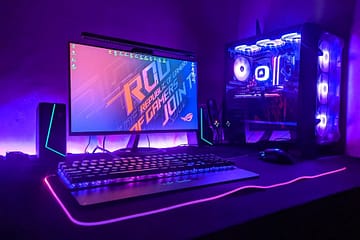In recent years, there has been a significant rise in the popularity of voice-controlled smart TV technology. This innovative technology allows users to control their televisions using voice commands, eliminating the need for traditional remote controls. The rise of voice-controlled smart TV technology can be attributed to the increasing demand for convenience and ease of use in the home entertainment sector. With the integration of voice recognition technology, smart TVs have become more accessible and user-friendly for individuals of all ages and abilities.
Furthermore, the rise of voice-controlled smart TV technology can also be attributed to the advancements in artificial intelligence and machine learning. These technologies have enabled smart TVs to understand and respond to natural language commands, making the user experience more intuitive and seamless. As a result, voice-controlled smart TV technology has become a popular choice for consumers looking to simplify their home entertainment experience and stay ahead of the technological curve.
The Impact of Sci-Fi on the Development of Voice-Controlled Smart TV Technology
The development of voice-controlled smart TV technology has been heavily influenced by science fiction. For decades, sci-fi movies and television shows have depicted futuristic worlds where technology is seamlessly integrated into everyday life, including voice-controlled devices. These depictions have inspired and influenced the development of real-world voice-controlled smart TV technology, as manufacturers strive to bring these futuristic concepts to life.
Additionally, the impact of sci-fi on the development of voice-controlled smart TV technology can be seen in the way these devices are marketed and perceived by consumers. The futuristic and cutting-edge nature of voice-controlled smart TVs is often emphasized in advertising and promotional materials, appealing to consumers who are drawn to the idea of living in a sci-fi inspired world. As a result, the impact of sci-fi on the development of voice-controlled smart TV technology has been significant, shaping the way these devices are designed, marketed, and perceived by consumers.
The Evolution of Voice Recognition Technology in Smart TVs
The evolution of voice recognition technology in smart TVs has been a gradual but significant process. Early iterations of voice-controlled smart TVs were often limited in their capabilities, with basic voice commands and limited language recognition. However, as technology has advanced, so too has the capabilities of voice recognition in smart TVs. Modern smart TVs are equipped with advanced voice recognition technology that can understand and respond to a wide range of natural language commands, making the user experience more intuitive and seamless.
Furthermore, the evolution of voice recognition technology in smart TVs has been driven by advancements in artificial intelligence and machine learning. These technologies have enabled smart TVs to learn and adapt to individual user preferences, making the voice control experience more personalized and efficient. As a result, the evolution of voice recognition technology in smart TVs has transformed these devices into powerful and versatile home entertainment tools, offering a level of convenience and ease of use that was previously unimaginable.
The Integration of Voice-Controlled Smart TV Technology with Virtual Assistants
One of the most significant developments in the world of voice-controlled smart TV technology is the integration of virtual assistants. Virtual assistants such as Amazon Alexa, Google Assistant, and Apple’s Siri have become increasingly integrated into smart TVs, allowing users to control their televisions using voice commands and access a wide range of additional features and services. This integration has transformed voice-controlled smart TVs into powerful home automation hubs, offering users a seamless and intuitive way to interact with their entertainment systems.
Furthermore, the integration of voice-controlled smart TV technology with virtual assistants has expanded the capabilities of these devices, allowing users to access information, control other smart home devices, and even make purchases using only their voice. This level of integration has made voice-controlled smart TVs an essential part of the modern connected home, offering a level of convenience and functionality that was previously unimaginable. As a result, the integration of voice-controlled smart TV technology with virtual assistants has transformed these devices into versatile and powerful tools for home entertainment and automation.
The Benefits and Drawbacks of Voice-Controlled Smart TV Technology
Voice-controlled smart TV technology offers a wide range of benefits for users, including convenience, ease of use, and accessibility. With the ability to control their televisions using only their voice, users can enjoy a more intuitive and seamless home entertainment experience. Additionally, voice-controlled smart TVs are particularly beneficial for individuals with mobility or dexterity issues, as they eliminate the need for traditional remote controls and physical interaction with the television.
However, there are also drawbacks to consider when it comes to voice-controlled smart TV technology. One potential drawback is privacy concerns, as voice-controlled devices may be constantly listening for commands, raising questions about data security and privacy. Additionally, there may be limitations in the accuracy and responsiveness of voice recognition technology, leading to frustration for users when their commands are not understood or executed correctly. Despite these drawbacks, the benefits of voice-controlled smart TV technology are significant, offering users a level of convenience and accessibility that is unmatched by traditional remote controls.
The Future of Voice-Controlled Smart TV Technology
The future of voice-controlled smart TV technology is bright, with continued advancements in artificial intelligence, machine learning, and natural language processing driving innovation in this space. As these technologies continue to evolve, we can expect to see even more intuitive and seamless voice control experiences for smart TVs, with improved accuracy and responsiveness. Additionally, the integration of virtual assistants is likely to become even more sophisticated, offering users a wide range of additional features and services through their smart TVs.
Furthermore, the future of voice-controlled smart TV technology is likely to see increased integration with other smart home devices and systems, creating a more cohesive and interconnected home automation experience. This level of integration will further enhance the convenience and functionality of voice-controlled smart TVs, making them an essential part of the modern connected home. As a result, the future of voice-controlled smart TV technology is poised to revolutionize the way we interact with our home entertainment systems and bring us closer to living in a truly sci-fi inspired world.
Tips for Using Voice-Controlled Smart TV Technology Effectively
To make the most of voice-controlled smart TV technology, there are several tips that users can follow to ensure a seamless and intuitive experience. First and foremost, it’s important to speak clearly and concisely when giving voice commands to your smart TV, as this will help improve accuracy and responsiveness. Additionally, familiarizing yourself with the specific voice commands and capabilities of your smart TV will help you make the most of its features and functionality.
Furthermore, it’s important to keep your smart TV’s software up to date to ensure that you have access to the latest advancements in voice recognition technology and virtual assistant integration. Additionally, taking advantage of any training or calibration features offered by your smart TV can help improve its ability to understand and respond to your voice commands. By following these tips and staying informed about advancements in voice-controlled smart TV technology, users can make the most of this innovative and convenient home entertainment solution.


